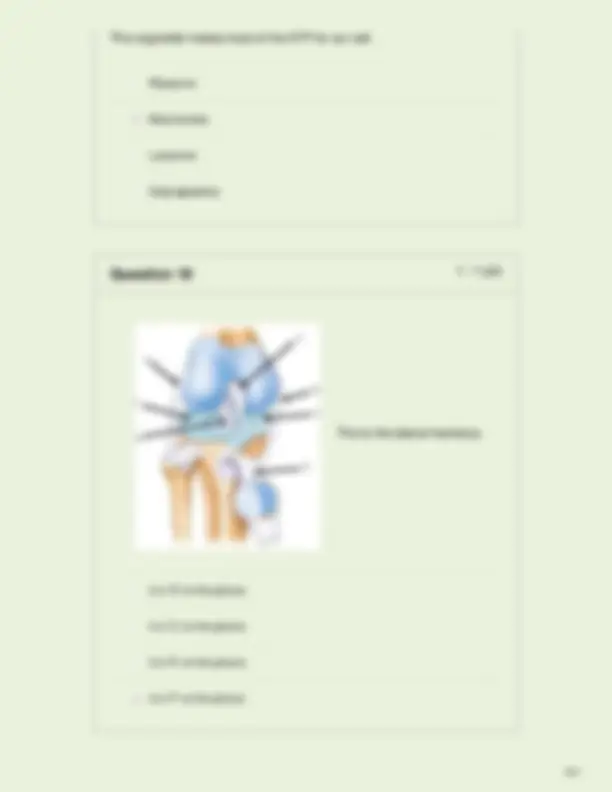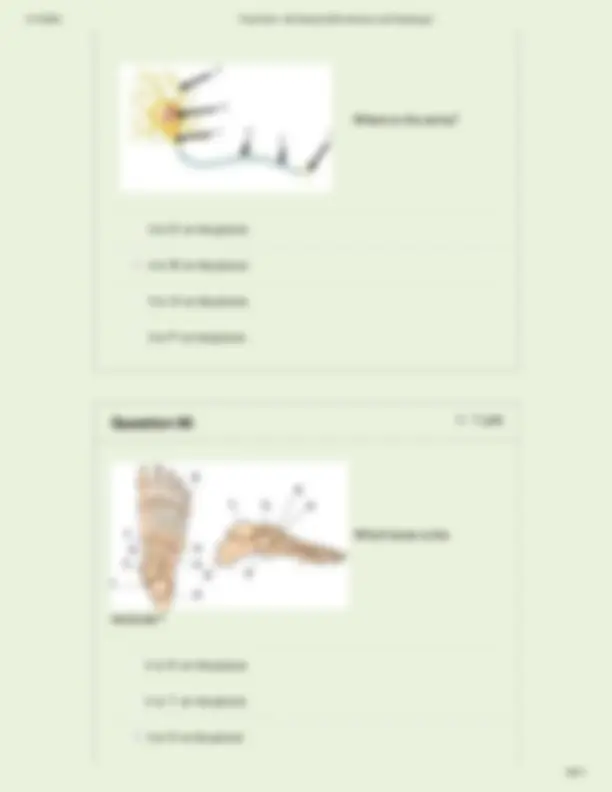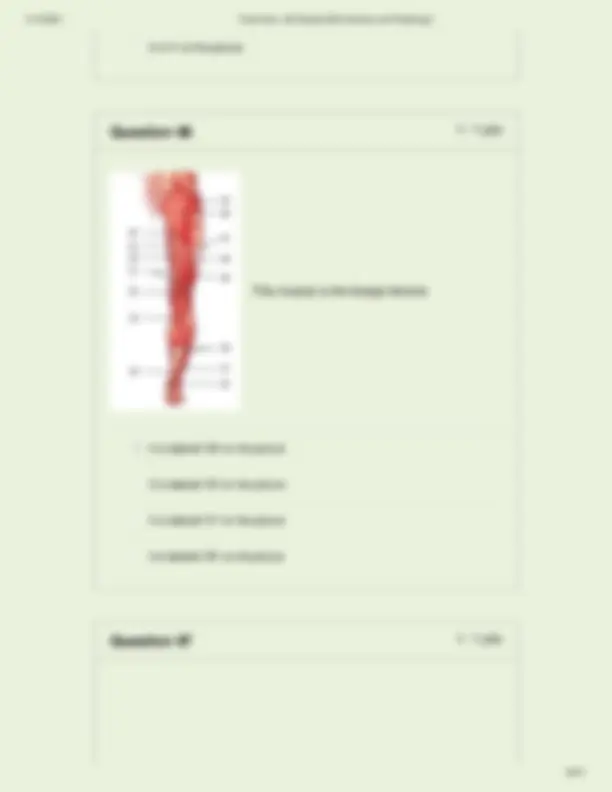



































Study with the several resources on Docsity

Earn points by helping other students or get them with a premium plan


Prepare for your exams
Study with the several resources on Docsity

Earn points to download
Earn points by helping other students or get them with a premium plan
Community
Ask the community for help and clear up your study doubts
Discover the best universities in your country according to Docsity users
Free resources
Download our free guides on studying techniques, anxiety management strategies, and thesis advice from Docsity tutors
APHY 101 FINAL EXAM Actual Complete Set QUESTIONS AND CORRECT ANSWERS with Diagram illustrations IVY TECH COMMUNITY COLLEGE INDIANAPOLIS New 2025/2026 Update
Typology: Exams
1 / 41

This page cannot be seen from the preview
Don't miss anything!


































High heat capacity Cushioning Reactivity High heat of vaporization This property of water prevents sudden changes in temperature.
False True During translation, a polypeptide is formed.
This is the word for the study of tissue. embryology
Labor pains Glucose being released from your liver when your blood sugar level is too low Sweating when you are hot Shivering when you are cold This is an example of positive feedback.
Inncoorrrecctt Name the monomer for nucleic acids.
False True Three parts to most cells include: plasma membrane, nucleus, and cytoplasm.
False True Water contains polar covalent bonding.
An atom contains 20 protons, 22 electrons, and 18 neutrons. What is the atomic number for this?
False True Passive transport requires ATP since substances move from a low concentration to a high concentration.
False True Phospholipids contain one part that is hydrophobic and one part this is hydrophilic.
Inncoorrrecctt You knee is to your ankle. Use the correct directional term. inferior superior distal proximal Your antebrachial region is to your brachial region.
It is 'F' on the picture. It is 'E' on the picture. It is 'C' on the picture. It is 'D' on the picture. This is the lateral meniscus.
This organelle makes most of the ATP for our cell. Ribosome Mitochondria Lysosome Golgi apparatus
Where is this tissue found? Air sacs of lungs
Stratified squamous epithelium Pseudostratified columnar epithelium Hyaline cartilage Smooth muscle What is this tissue?
basale Third degree First degree Fourth degree Second degree You may have blistering with this type of burn.
This is the deepest skin strata. Stratum. (Only one word is needed to answer this).
Embryonic skeleton None of these answers are correct Spleen
Osteoclast Osteogenic cell Osteoblast Osteocyte This cell makes bone.
This type of fracture is often associated with osteoporosis: fracture. compound linear compression transverse
None of these answers are correct Eccrine Apocrine Sebaceous
This is your thigh bone.
This bone is found in the lateral part of your anatomical leg.
Humerus Temporal Ulna Fibula This bone is found in your anatomical arm.
Femur Hip or Coxal Tibia Scapula This bone contains an ischial tuberosity.
False True Spongy bone contains many osteons.
This bone contains a supraorbital notch/foramen. maxilla zygomatic frontal coxal
False True The epiphyseal growth plate is an example of a synostosis joint.
This is the A band.
Osteoblasts Hydroxyapatite crystals Collagen fibers Osteoclasts This gives bone tensile strength and flexibility.
Skeletal muscle Smooth muscle Cardiac muscle This muscle is striated and voluntary.
This muscle is found in your posterior thigh. Biceps brachii Mentalis
Calmodulin Myosin Troponin Tropomyosin Calcium binds to this in skeletal muscle.
masseter Muscles of mastication include: medial/lateral pterygoids, temporalis, and .
Calcium is stored in transverse tubules in skeletal muscle.
Inncoorrrecctt Semimembranosus Rectus femoris Prophase Metaphase Anaphase Telophase During this stage of mitosis, each chromatid becomes a chromosome.